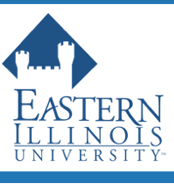Start Date
16-10-2020 11:00 AM
End Date
16-10-2020 11:50 AM
Document Type
Presentation
Abstract
Acosta, J., Chandra, A., & Madrigano, J. (2017) stated that “Resilience is defined as the capacity of any dynamic system to anticipate and adapt successfully to difficulties. Individual resilience is the process of, capacity for, or outcome of adapting well in the face of adversity, trauma, tragedy, threats, or significant sources of stress.” The Seven streams of resilient behavior – community, competence, connections, commitment, communication, coordination, and consideration – act as a whole system response, as a practical theory that has the capacity to adapt and mold to changing data and shifting circumstances in the face of new technology according to Horne, J. F., III, & Orr, J. E, 1998. Resilience is a combination of social competence and pro-social values, optimism, purpose, an attachment to family, to school and learning, problem-solving skills, an effective coping style, and a positive self-image. Kintsugi is an ancient Japanese art meaning ‘to join with gold.’ Kintsugi consists of assembling “broken pieces of an accidentally-smashed pot” (The Book of Life, 2018). Kintsugi celebrates imperfection. The broken pieces of the pot are glued together with “lacquer inflected with a very luxuriant gold powder” (The Book of Life, 2018). The visible fractures are adorned with gold rather than hidden. Symbolically, the golden cracks represent the worth of the bowl because of its imperfections rather than in spite of them. The bowl is like a human, cracked by the contingency of life. The gold endows the pot with unassailable beauty, uniqueness, and strength. There is a lesson for embracing failures and experiences that crack our spirit. How do we turn those life cracks into gold? This relates back to our idea of building resilient educators so that they can serve children in inclusive, quality learning environments.
Creative Commons License

This work is licensed under a Creative Commons Attribution-Noncommercial-No Derivative Works 4.0 License.
Educator Self-Care, Resiliency, and Inclusion
Acosta, J., Chandra, A., & Madrigano, J. (2017) stated that “Resilience is defined as the capacity of any dynamic system to anticipate and adapt successfully to difficulties. Individual resilience is the process of, capacity for, or outcome of adapting well in the face of adversity, trauma, tragedy, threats, or significant sources of stress.” The Seven streams of resilient behavior – community, competence, connections, commitment, communication, coordination, and consideration – act as a whole system response, as a practical theory that has the capacity to adapt and mold to changing data and shifting circumstances in the face of new technology according to Horne, J. F., III, & Orr, J. E, 1998. Resilience is a combination of social competence and pro-social values, optimism, purpose, an attachment to family, to school and learning, problem-solving skills, an effective coping style, and a positive self-image. Kintsugi is an ancient Japanese art meaning ‘to join with gold.’ Kintsugi consists of assembling “broken pieces of an accidentally-smashed pot” (The Book of Life, 2018). Kintsugi celebrates imperfection. The broken pieces of the pot are glued together with “lacquer inflected with a very luxuriant gold powder” (The Book of Life, 2018). The visible fractures are adorned with gold rather than hidden. Symbolically, the golden cracks represent the worth of the bowl because of its imperfections rather than in spite of them. The bowl is like a human, cracked by the contingency of life. The gold endows the pot with unassailable beauty, uniqueness, and strength. There is a lesson for embracing failures and experiences that crack our spirit. How do we turn those life cracks into gold? This relates back to our idea of building resilient educators so that they can serve children in inclusive, quality learning environments.





Speaker Information
Carolyn B. Jester, BSE, MSE, EdD
Professor of Special Education, Henderson State University, Arkadelphia, AR. Dr. Carolyn B. Jester is a Professor of Special Education at Henderson State University in Arkadelphia, AR. The majority of her prior experience includes working in the public-school system as a special education teacher and then becoming the special education supervisor for the school district. Dr. Jester’s degrees include B.S.E. Dual-General Education K-6 and Special Education K-12, HSU M.S.E. School Counseling, K-12, Curriculum Program Administration in Special Education Supervision also from HSU. She received the Educational Psychology, Ed.D at Regent University, Virginia Beach, VA. jesterc@hsu.edu
Peggy Woodall, BS, MS, PhD
Professor in the Advanced Instructional Studies Department, Henderson State University, Arkadelphia, AR. Dr. Peggy Woodall is a professor in the Advanced Instructional Studies Department at Henderson State University. She teaches courses in both special education and education leadership. Her career in the field of education spans over 40 years of active roles in both special education and public-school administration as well as adjunct and professor roles in higher education. Her credentials for the licenses include full endorsement in gifted and special education categories and three administrative levels as principal, supervisor and superintendent. Dr. Woodall holds a Bachelor of Science from the University of Arkansas and a Master of Science in Gifted Education and Special Education Administration from Ft. Hays Kansas State University. Her doctorate degree is from the University of Santa Barbara California in Special Education and Legal Issues. woodalp@hsu.edu
Tammy Wrobbel
Candidate in the Master of Education Developmental Therapy Program, Henderson State University, Arkadelphia, AR. Ms. Tammy Wrobbel is a Candidate in the Master of Education Developmental Therapy Program at Henderson State University and an Inclusion Specialist in the State of Illinois at Early CHOICES. She has served as a Coordinator of Special Services and a Developmental Therapist in the State of Illinois. With 19 years of experience in the field of early childhood, Ms. Wrobbel enjoys serving children, families, and staff as well as collaborating with community agencies. Ms. Wrobbel is also a Certified Infant Massage Instructor, Youth Trauma Yoga specialist, and a Volunteer Advocate for the State of Illinois. tammywrobbel@gmail.com